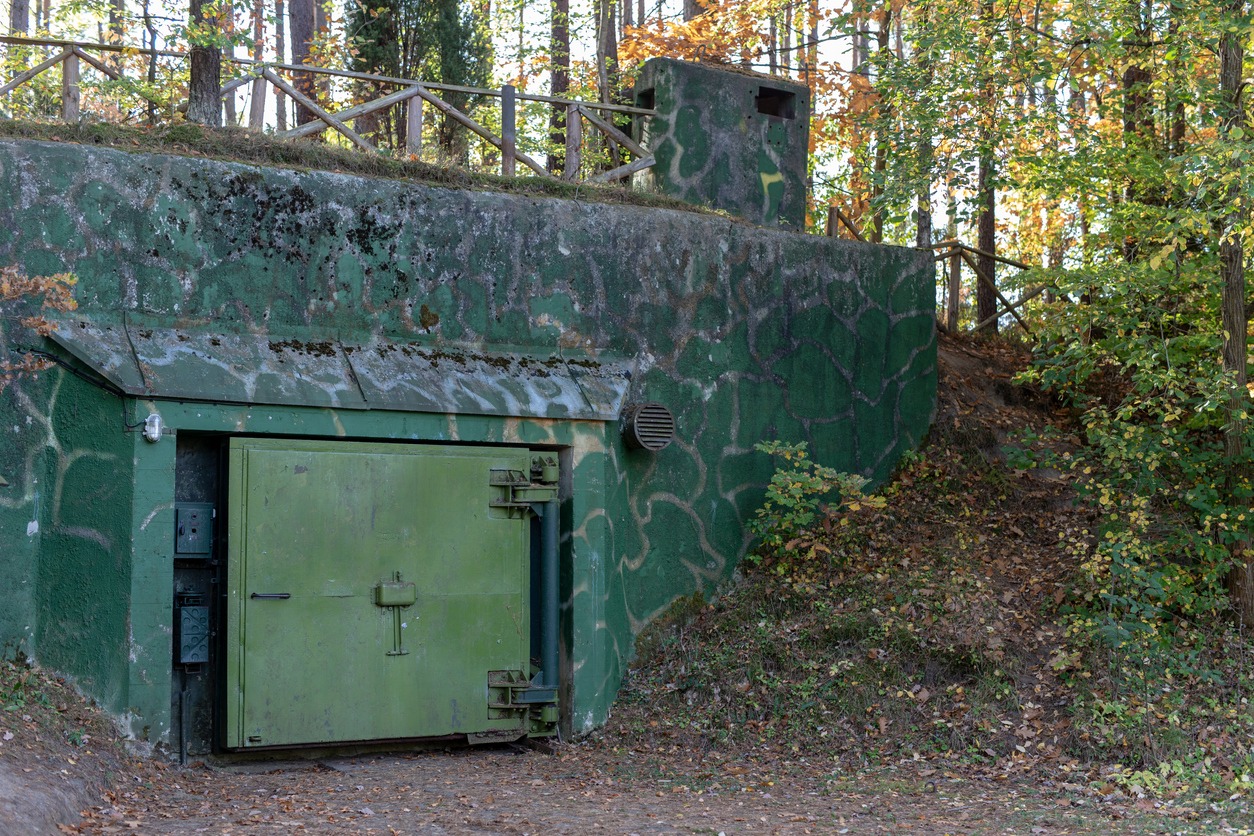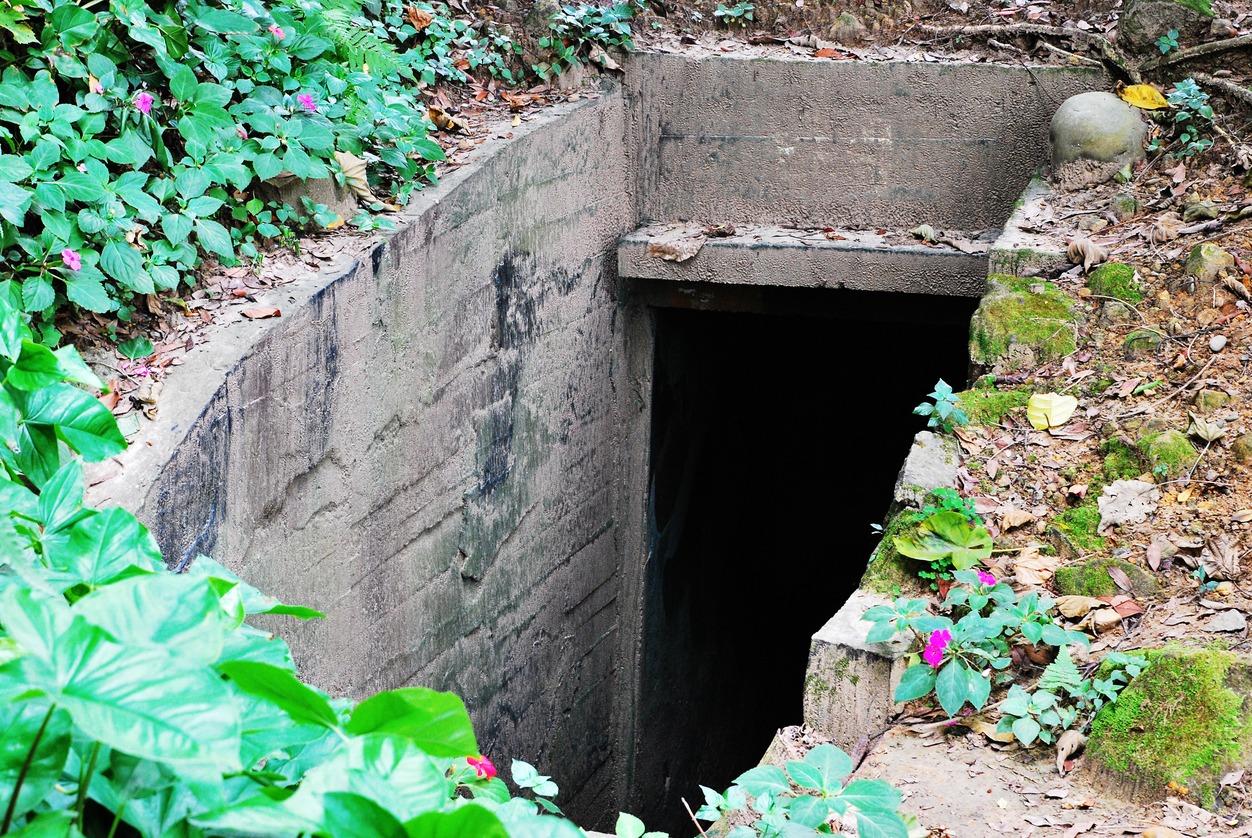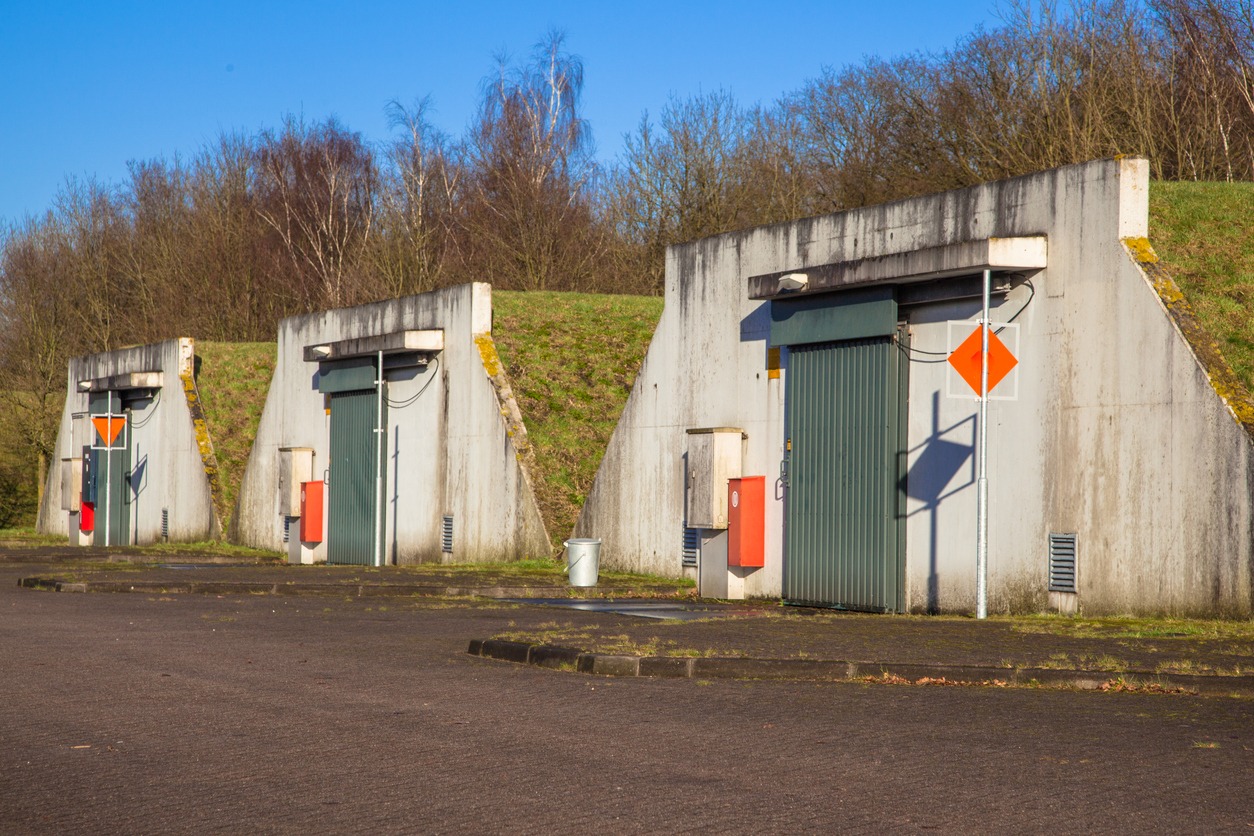Today, the world seems so unpredictable and we never know what lies ahead. So, planning when a catastrophic disaster, either man-made or natural, strikes is crucial. Bunkers provide a tangible solution to prepare for such events, offering a reliable and fortified space where individuals can find refuge and peace of mind amidst uncertainty.
Bunkers are specially built structures designed to provide safety and protection for people and valuable possessions when faced with different types of attacks. They are vital in times of conflict, war, and emergencies, serving as lifelines that shield individuals from danger. With their sturdy construction and well-thought-out design, bunkers offer a defense against falling bombs, artillery fire, and other potential threats.
To navigate the world of bunkers effectively, it is vital to understand the different types available, each serving a specific purpose.
What is a Bunker?
The word “bunker” is believed to have a Scandinavian origin, with the Old Swedish term “bunke” referring to boards used to protect the cargo of a ship. Throughout history, the meaning of the term evolved to encompass various types of protective structures, including those utilized for coal storage and underground shelters.
A bunker is a military hideout or shelter designed to provide protection for people and valuable materials from various forms of attacks, including falling bombs, artillery fire, or other types of attacks. The primary purpose of a bunker is to offer a secure and fortified space that can withstand these attacks and keep the occupants safe.
One important aspect of bunker design is the strength of its door. The door must be constructed to be at least as strong as the walls of the bunker to ensure that it can withstand external forces and provide a barrier of protection.
Importance of Bunkers:
Bunkers have been extensively used during major conflicts such as World Wars I and II, as well as the Cold War. They have served as essential structures for military operations, providing safe spaces for personnel, command centers, storage facilities for equipment and supplies, and even as underground factories or research laboratories.
In addition to military applications, bunkers can also be utilized for civilian purposes, such as protection from natural disasters like tornadoes. The sturdy construction and fortified nature of bunkers make them suitable for providing shelter during extreme weather events.
Overall, bunkers play a crucial role in providing safety and protection in times of conflict, emergencies, and natural disasters. Their robust construction and strategic design make them valuable assets for safeguarding lives and valuable resources.
What are the Types of Bankers?
There are several types of bunkers that cater to different needs and scenarios. Each type is designed with specific purposes and features in mind to ensure the highest level of protection. Let’s explore these types of bunkers:
1. Residential Bunkers
Residential bunkers are a crucial investment for individuals prioritizing the safety of their families. These fortified structures are specifically designed to withstand various threats, such as tornadoes, civil unrest, terrorist attacks, and home invasions.
Residential bunkers also serve as safe rooms within the home. Safe rooms provide a secure sanctuary where individuals can seek refuge during emergencies. Equipped with communication devices, emergency supplies, and reinforced doors and windows, safe rooms deter unauthorized access and offer a heightened sense of security. They allow individuals and their families to wait out potential threats or contact authorities for assistance.
When constructing a residential bunker, the location plays a vital role. The choice between an underground or reinforced room bunker depends on factors like available space, budget, and personal preferences.
Types:
Underground bunkers:
this is a shelter located below ground level, designed to provide protection and security during emergencies. It is a standalone structure made of durable materials like reinforced concrete or steel to withstand impacts and blasts. The underground location offers increased protection from bombings, artillery fire, and other hazards. These bunkers can have amenities like ventilation systems, communication devices, and supplies to sustain occupants for an extended period.
Reinforced bunkers:
A popular and reliable design approach for personal bunkers involves using fibre-reinforced plastic (FRP) shells. FRP provides exceptional strength and durability, capable of withstanding high-impact forces. This material is resistant to corrosion, fire, and water damage, ensuring the long-term effectiveness of the bunker. Another variation of reinforced is the reinforced below-ground bathroom that is a commonly used space for personal bunkers. It offers solid walls and often comes equipped with large cabinets for storing essential supplies and equipment.
2. Industrial Bunkers
Industrial bunkers are versatile structures that safeguard vital industries and infrastructure. Initially developed during World War II to protect industries from aerial bombings, they continue to play crucial roles today.
One type of industrial bunker is the dumpsite bunker, designed for the safe storage and management of hazardous waste. These bunkers employ reinforced walls and advanced containment systems to ensure the containment and minimize environmental risks.
In mining, industrial bunkers provide a refuge during emergencies like rockfalls or gas leaks, safeguarding the safety of workers and equipment near mining operations.
Data storage facilities often incorporate specialized bunkers to protect critical digital assets. These bunkers feature advanced security systems, fire suppression mechanisms, and redundancy measures to prevent data loss or unauthorized access.
In some cases, industrial bunkers are integrated into residential areas, offering protection during conflicts or disasters. These residential bunkers, made with reinforced materials and essential amenities, serve as a safe haven for individuals and families until conditions improve.
3. Munitions Storage Bunkers
These types are specifically designed structures built to safely store explosive ordnances and ammunition. Their primary purpose is to handle and contain hazardous materials, including volatile substances. To enhance safety, these bunkers are strategically situated on hillsides, providing additional containment mass in case of accidental explosions. This location helps mitigate the impact and spread of explosions, ensuring the protection of nearby areas.
A notable example of a specialized munitions storage bunker is the Gravel Gertie bunker situated at the Pantex plant in Amarillo, Texas. It was specifically constructed to securely hold radioactive materials during the assembly or disassembly of nuclear warheads. The design of this bunker incorporates stringent safety measures to prevent any release of radioactive substances, safeguarding personnel involved in the handling process. These types of bunkers are typically built with reinforced walls and other specialized features to ensure the highest level of security and containment.
4. Trench bunkers
Trench bunkers are essential structures commonly employed in military environments. They are strategically built within defensive trench systems to offer heightened protection to soldiers against enemy fire and aerial assaults. These bunkers are partially buried, with open tops that allow for the effective use of weapons while ensuring cover and concealment for the troops.
An example of a trench bunker is the German “Wolfsschanze” or Wolf’s Lair, which was Adolf Hitler’s Eastern Front military headquarters during World War II. The complex consisted of numerous trench bunkers interconnected through an extensive network of tunnels. These bunkers provided vital protection for high-ranking Nazi officials, allowing them to command operations while minimizing exposure to enemy attacks.
5. Artillery bunkers
This bunker plays a vital role as protective shelters for artillery crews, shielding them from enemy counter-battery fire. These bunkers, which were primarily built prior to the Cold War, are characterized by their substantial size. They are specifically designed to withstand the intense impact of artillery fire, providing a secure operational environment for artillery personnel. The construction of artillery bunkers incorporates reinforced walls and ceilings, reinforcing their ability to withstand incoming projectiles. By offering a fortified position, these bunkers ensure the safety and effectiveness of artillery units during combat scenarios, allowing them to carry out their missions with enhanced security and operational efficiency.
Conclusion:
Bunkers symbolize human innovation in constructing fortified spaces to ensure safety and security. They serve diverse purposes, such as storing explosives, offering personal refuge, protecting industries, defending artillery installations, and providing cover for military forces. Each type of bunker plays a crucial role in preserving lives and vital resources during times of crisis. As conflicts and emergencies persist, bunkers continue to be invaluable, offering solace and protection to humanity in the face of danger. They stand as resilient structures that prioritize safety and provide a sense of security in uncertain times.



